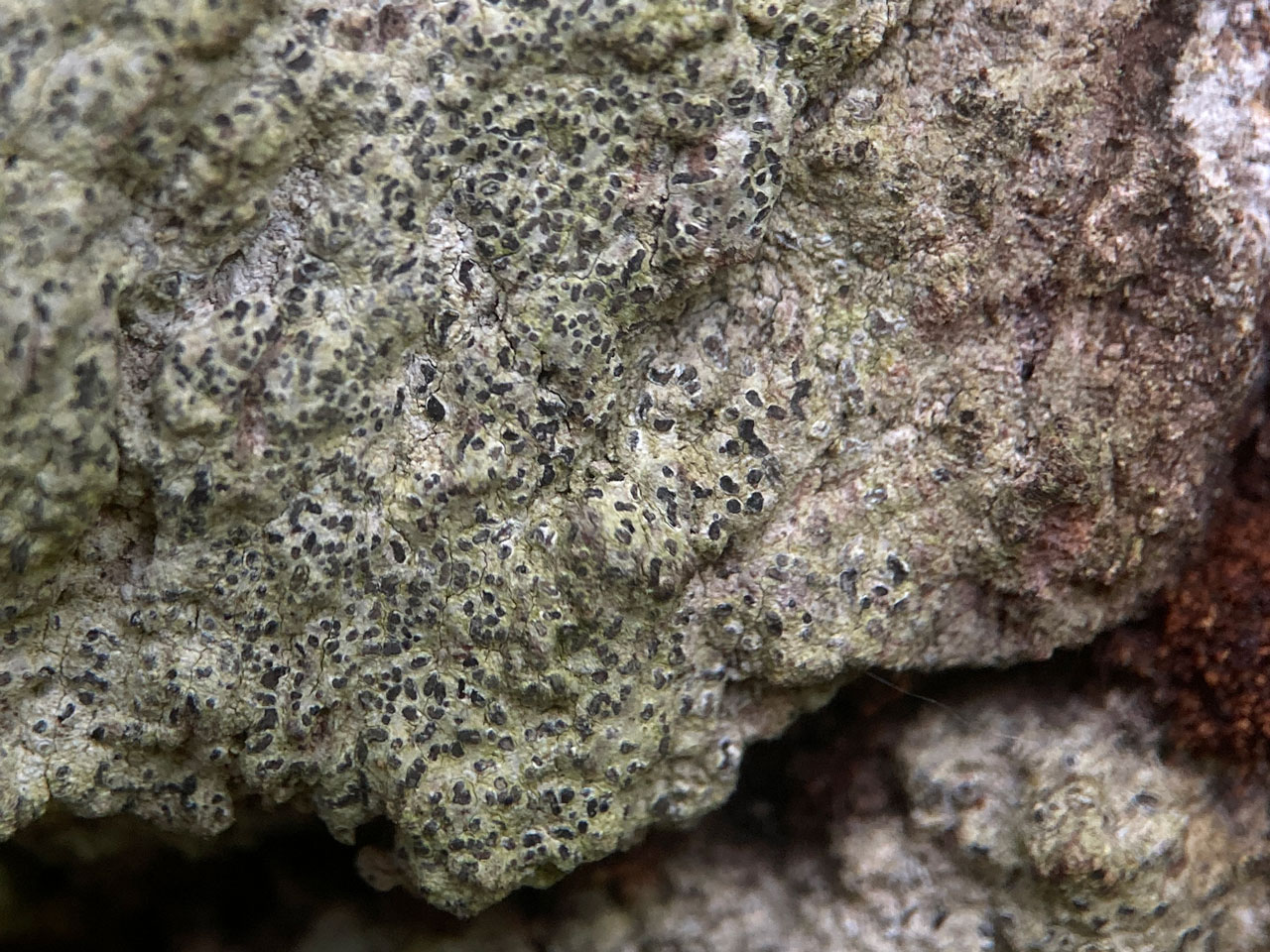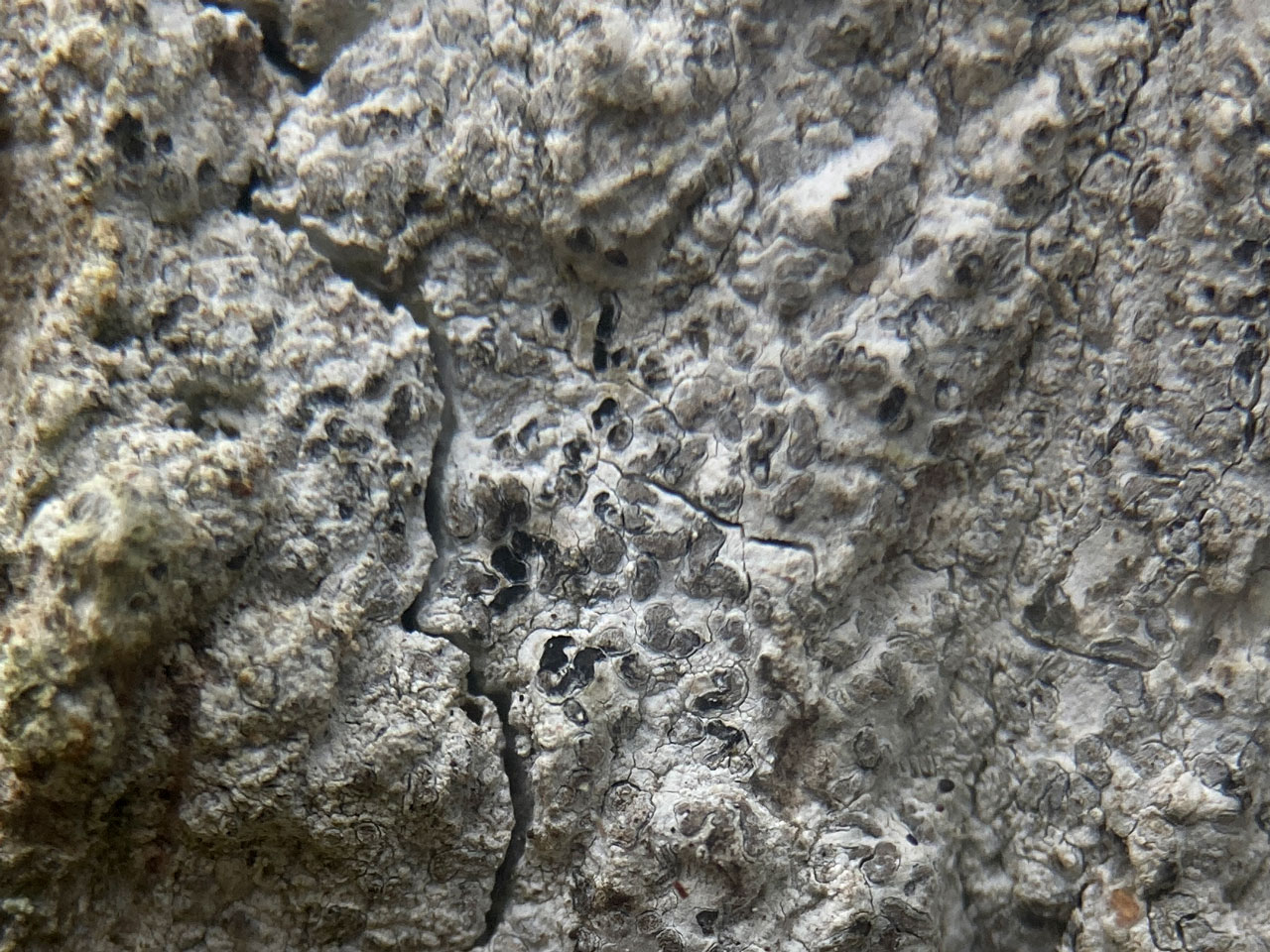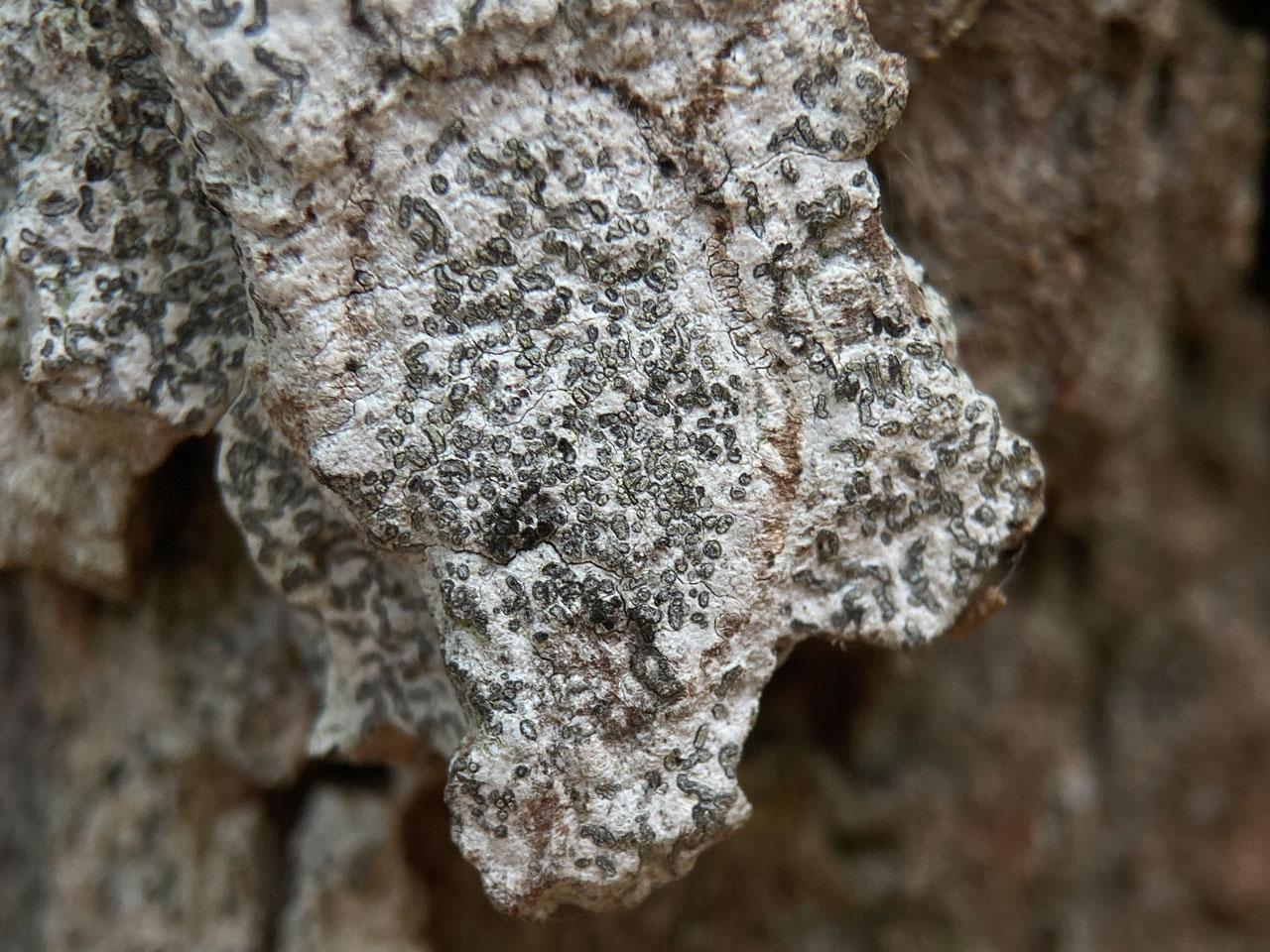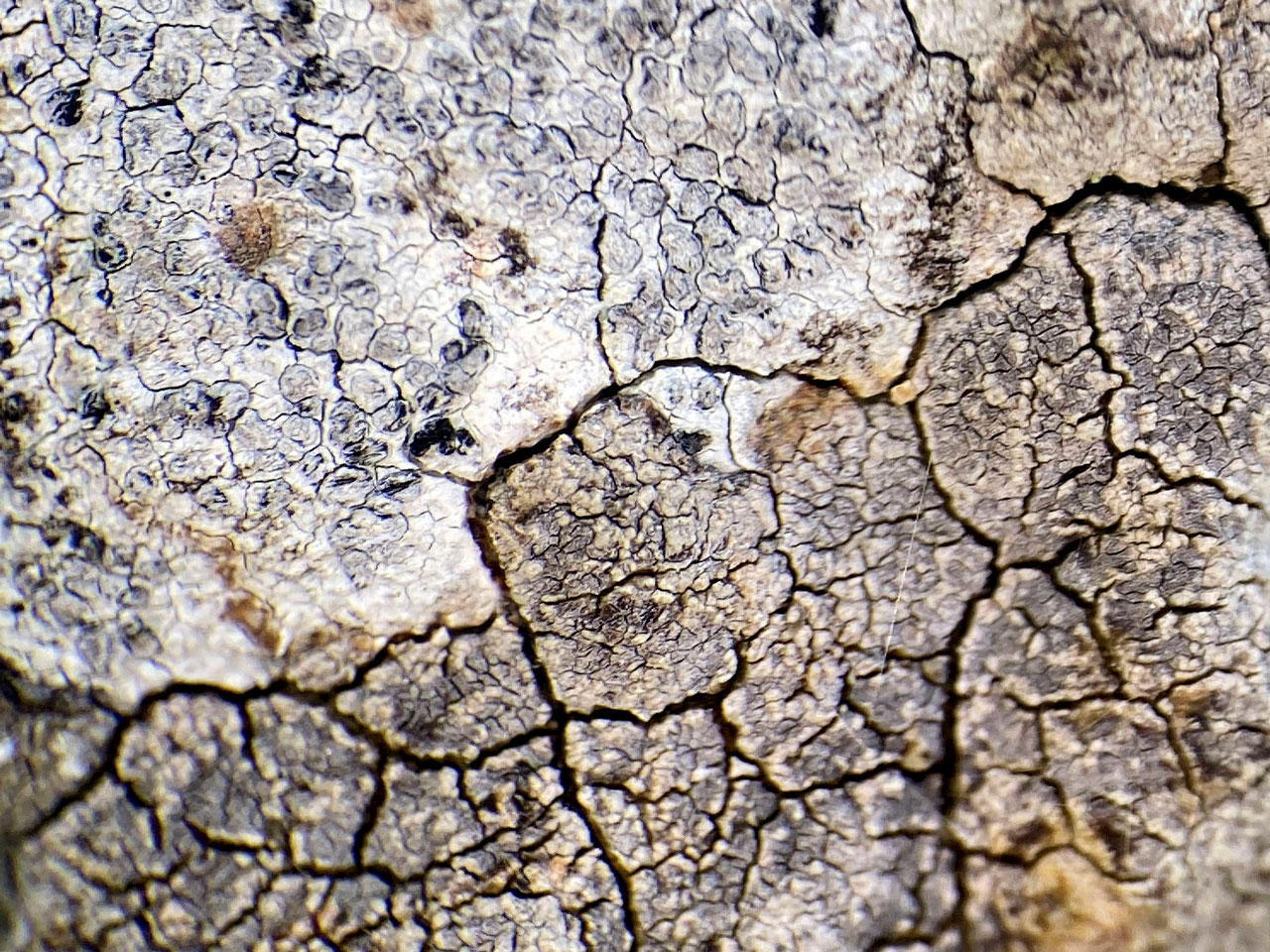Lecanographa lyncea forms chalky white patches with elliptical to shortly lirellate white pruinose apothecia, on dry bark on veteran Oaks in parklands and pasture woodlands in the south and south west. It can be sterile or blackened by the lichenicolous Milospium graphideorum, when the distinctive K/UV + mauve test for confluentic becomes useful. The southern populations of this lichen appear to be the largest in Europe reflecting the abundance of veteran Oaks in parts of the English landscape and giving our populations European significance.
Thallus thick, chalk white, ecorticate and continuous to ± cracked, with a smooth or granulose surface; sometimes sterile, with numerous evenly scattered pale brown granular flecks (apparently ascomatal initials) to 0.1 mm diam. Apothecia frequent, elliptical to shortly lirelliform, occasionally elongate to 0.3–1.6 (–2) × 0.2–0.3 (–0.5) mm, rarely rounded, disc thinly to densely whitish to brown-grey pruinose; true exciple prominent, mostly not or only thinly pruinose. Asci cylindrical-clavate, 55–75 (–80) × 12–14 (–17) μm. Ascospores 7- to 8(-12)-septate, (18–) 21–30 (–41) × 3–4.5 μm, elongate-fusiform, straight to slightly curved, surrounded by a thick gelatinous sheath. Pycnidia globose to subglobose; conidia 4–6 × ca 1 μm, straight. Thallus C–, K–, KC–, Pd–, UV+ white, K/UV+ mauve (confluentic and 2′-O- methylmicrophyllinic acids).
Often grows with, and apt to be confused with Pachnolepia pruinata which has C+ red apothecial pruina. Spot tests or TLC are essential for confirmation of sterile specimens; sterile Lecanographa lyncea has been much mis-recorded as L. amylacea in England and Wales in the past, but the latter lacks confluentic acid and hence lacks the K/UV+ mauve spot test. The thallus is frequently partly blackened by the lichenicolous Milospium graphideorum D. Hawksw. (1975).
On dry, rough, usually well-lit bark or lignum of ancient Oak or (rarely) other species including Beech, Field Maple, Hornbeam and Turkey Oak, in ancient, usually open, parklands or pasture woodland. A frequent component of less acidic Ancient Dry Bark Communities (Lecanactidetum premneae). It can also occur in the Nutrient Rich Dry Bark Community (Arthonietum impolitae) where Pachnolepia pruinata cover has increased due to increased ammonia pollution, possibly as a relic species of cleaner conditions.
Lecanographa lyncea grows on bark that is only rarely, if at all, wetted by stem flow and likely obtains most of its moisture from dew. The greater thermal mass of large Oaks inducing more dew deposition may be a factor in its restriction to older trees. It needs a generally humid oceanic climate, but not a very wet one where frequent stem flows extend into overhanging bark, hence encouraging bryophyte growth. It is therefore very rare or absent in temperate rainforest habitats but can be abundant in southern oceanic woods. Sanderson (1996 & 2010) found that this lichen was completely absent from developing old growth stands that were clear felled in the early 18th century, even when the lichen was frequent in adjacent ancient old growth pasture woodland in the New Forest. It had however, recolonised pasture woodland developed over farmland abandoned after the Black Death. This suggests it typically requires over 300 years to colonise new woodlands.

Locally frequent. S. & E. England, S. & C. Wales, N. England (extinct), very rare in W. Scotland (Loch Sunart) and C. & N Ireland.
There were historic losses from the north and midlands to acidifying pollution, but it is still very locally abundant in the south and south west, where populations of between 50 – 100 trees can be found in old parks and pasture woodlands. The may be up to 1000 trees with this lichen in the New Forest. These appear to be the largest populations in Europe reflecting the abundance of veteran Oaks in parts of the English landscape and giving our populations European significance. Rising ammonia pollution is likely to be a threat, with Pachnolepia pruinata displacing this species in heavily ammonia polluted trees.
Britain: Notable & International Responsibility species
Wales: Endangered
Cannon, P., Coppins, B., Ertz, D., Pentecost, A., Sanderson, N., Simkin, J. & Wolseley, P. (2021). Arthoniales: Lecanographaceae, including the genera Alyxoria, Lecanographa, Phacographa, Plectocarpon and Zwackhia. Revisions of British and Irish Lichens 14: 1-15.
Sanderson, N. A. (1996) Lichen Conservation within the New Forest Timber Inclosures. Eastleigh: Hampshire Wildlife Trust.
Sanderson, N. A. (2010) Chapter 9 Lichens. In: Biodiversity in the New Forest (ed. A. C. Newton) 84-111. Newbury, Berkshire; Pisces Publications
Text by Neil A Sanderson, based on Cannon et al (2021)




